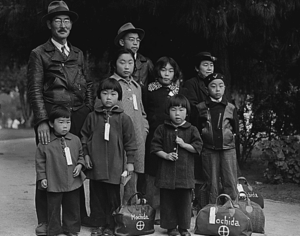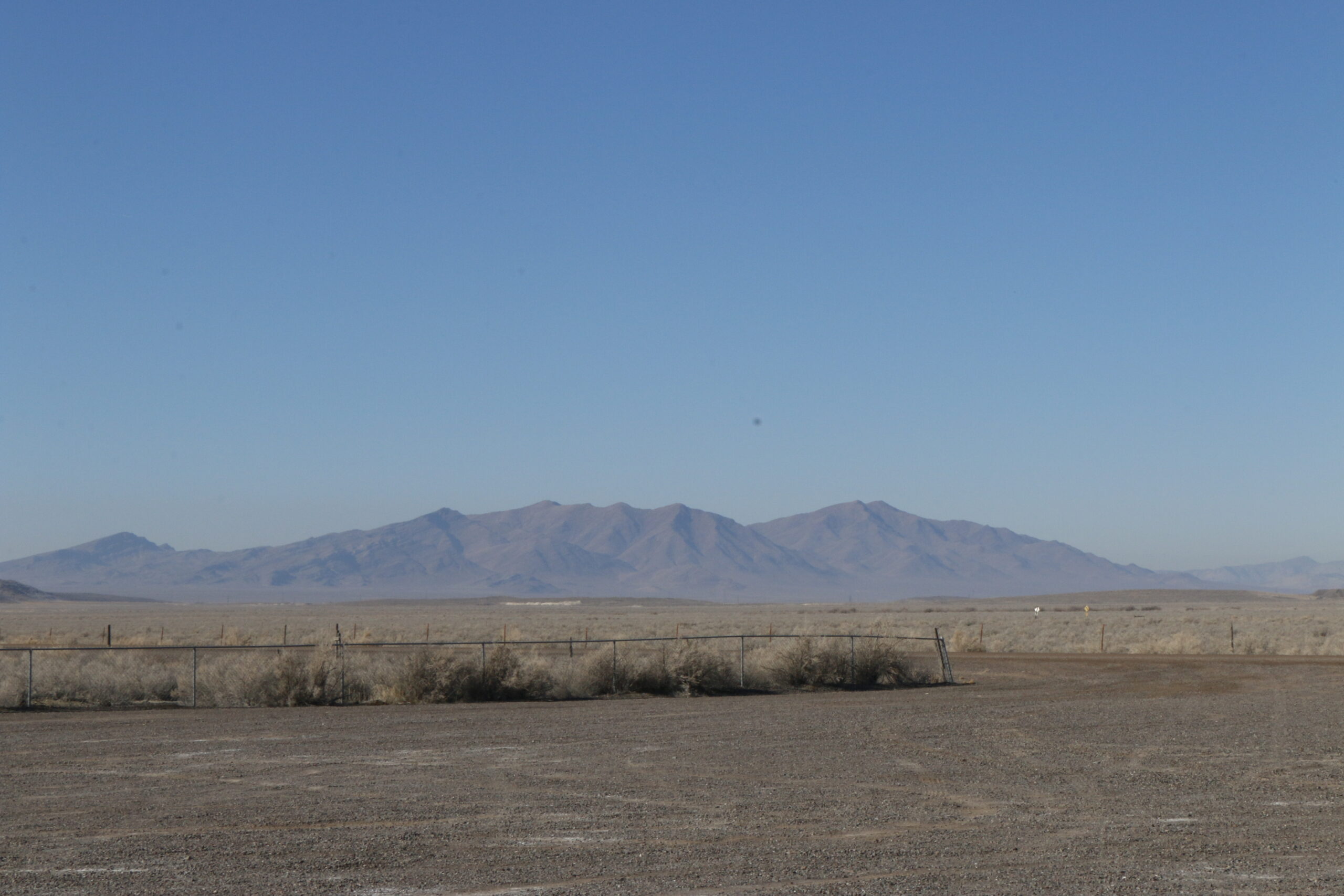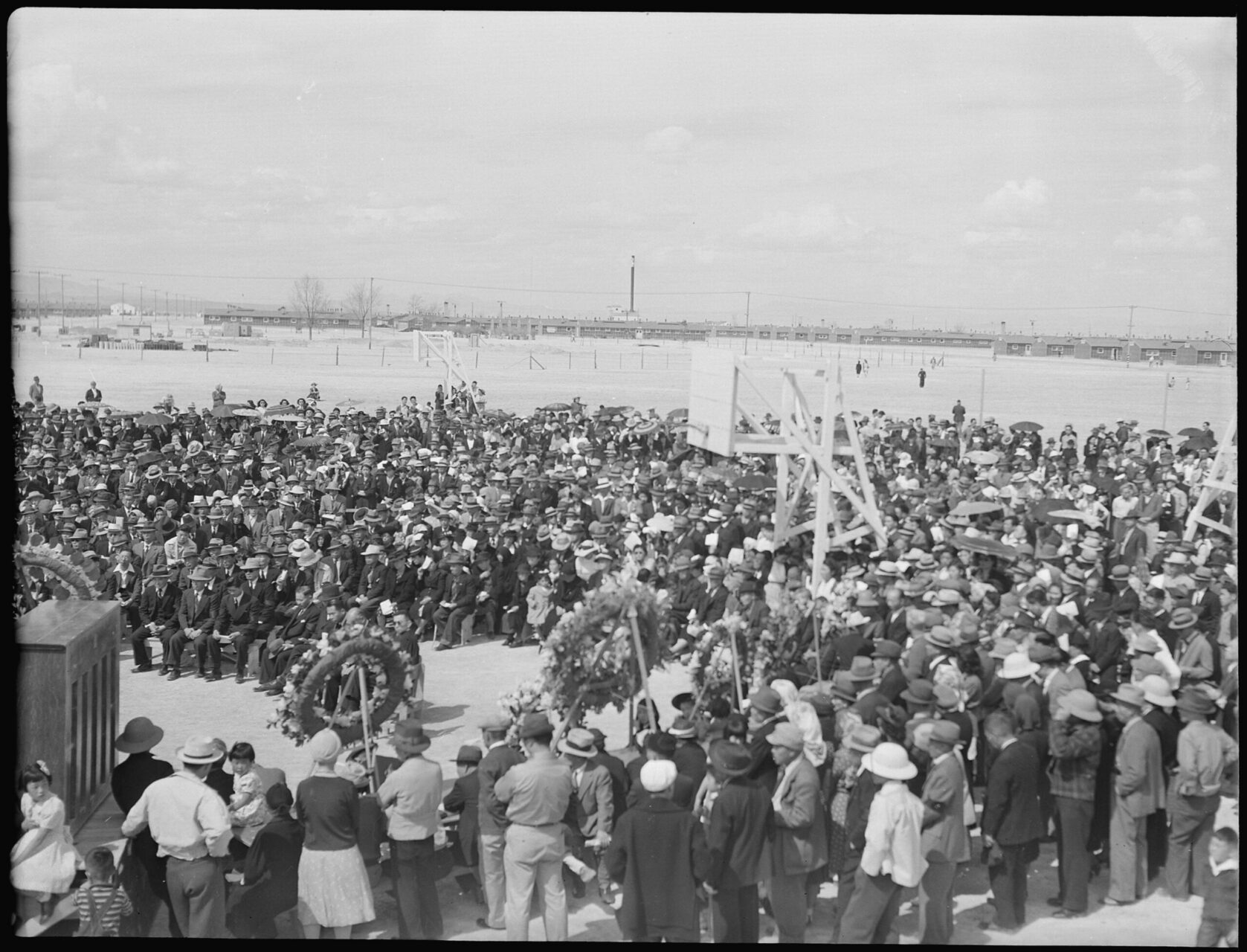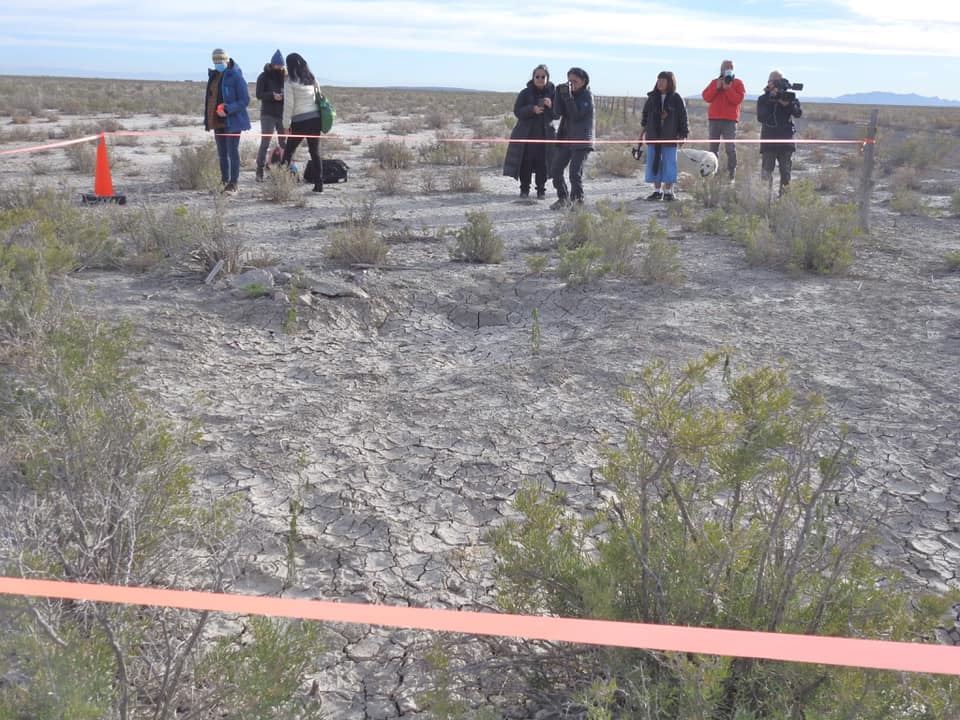Nancy Ukai was at home, enjoying her evening on July 2021, when she received an email that would dig up the painful feelings of her family’s past. The email told of the surprise removal of an important Japanese memorial earlier that day.
The Wakasa Memorial wasn’t removed with the assistance of archaeologists, but by a local resident with a forklift and with not a single Japanese American present. Ukai was shocked to learn of the inconsiderate acts of the removal, but on an even deeper level she felt the heartbreak of the history of disregard and carelessness towards the Japanese population in the U.S.
Eighty years ago on Feb. 19, President Franklin Roosevelt issued Executive Order 9066. This order authorized persons seen as ‘war threats’ to be evacuated and confined.

Buried in America’s history is the hardship and incarceration of Japanese Americans.
According to the National Archives, in 1942 after the events of Pearl Harbor, Japanese Americans were relocated and incarcerated to camps in remote locations around the U.S. They were taken from their homes and livelihoods. Despite many being American citizens, they were discriminated against for their race.
They were incarcerated for three years until the end of World War II, but prejudice lingered and no attempt of reconciliation was made until 1988.
This undiscussed injustice is something people in the Japanese community have stayed silent on for years. According to descendants of survivors, the suffering in the camp and being discriminated against left them with hardships they will never fully get justice for.
One of these camps is located just 90 miles from Provo, in the rural town of Delta, Utah. It was called Topaz. The National Park Service reported that Topaz housed around 8,000–11,000 Japanese Americans throughout the war.
The racial discrimination occurred only 80 years ago, yet it has slipped underground. For most survivors, the experience was so shameful they hardly spoke of it after being released. However, that is starting to change as descendants of those incarcerated are using their voices to break the cycle of silence.
Kimiko Marr, a Topaz descendent, explains why Japanese Americans have suffered quietly through their hard history in the U.S.
On Sept. 14, 2020, Ukai, a descendant of Topaz survivors, published an article called “The Demolished Monument.” This article told the story of the wrongful death of James Hatsuaki Wakasa and injustice in the Topaz internment camp.

(Kelsey Mae Nield)
Murder at Topaz
Topaz may indeed have been ‘a concentration camp with a human face,’ but as the murder of 63-year-old James Matsuzaki Wakasa for coming too close to the fence proved, the power that the government held over the incarcerated permeated Topaz and was that of life and death.
Sandra C. Taylor
One evening in Topaz, 63-year-old Wakasa was walking his dog along the border of the camp. Because of his proximity to the border fence, a guard in a tower 250 yards away noticed Wakasa. It’s suspected that the guard voiced verbal warnings. Then the guard fired a single shot, severing Wakasa’s spinal cord and killing him instantly.
The tragic news swept through the camp, devastating the community. Hurting from Wakasa’s untimely death, the Japanese people in the camp wanted to remember him. They held a funeral service in his honor and built a memorial.
According to Ukai’s article, two landscaping crew members helped build a monument where he was killed. The monument caused an uproar all the way in Washington D.C., and the monument was instructed to be removed.
The guard who shot Wakasa was acquitted of murder in the trial. The camp was never told of the trial’s outcome.
The injustice and careless manner of this murder is a tender spot in Japanese American history. That is why when the Wakasa memorial was discovered to be still intact and not destroyed, it struck a note with the survivors and their descendants.

The Memorial
In Ukai’s article, she published a map she found in the National Archives of where the murder was suspected to have take place. The map showed a different spot than what had previously been suspected to be the site of Wakasa’s murder. This sparked the interest of two archeologists, Mary M. Farrell and Jeff Burton, who used the map Ukai found to discover a buried memorial out in the remnants of Topaz.
His life, his history and the monument were buried, everything.
NANCY UKAI
The buried monument was a huge discovery that touched many of those who connected with the stories of Topaz. Several Japanese Americans, including Ukai, worked on getting the monument properly removed by archeologists.
However, despite their well-developed plans to have the memorial removed officially, the Topaz Museum Board removed the monument without any notice and informed Ukai through an abrupt email on July 27, 2021.
The Topaz Museum was created in 1995 as a non-profit to preserve the incarceration site and educate the public. Jane Beckwith, a former teacher at Delta High School, created the museum after doing research with high school students about the history of the site. The museum’s board of directors oversees its operation.
The email was sent to Ukai as well as to Makasko Takahashi, who was born in Topaz. Takahashi wanted to help fund the removal of the memorial and was the originally proposed donor before the museum board took charge of the project.
Ukai and other members of the Japanese community were devastated by the ignorance and carelessness of the board.
“This is important history to us, and you are supposed to protect it. You don’t just write a quick email like it’s nothing,” Ukai said.
More painful details on the monument came to light: The monument was removed by a local Delta resident with a forklift, not an archeologist, and the audience present didn’t contain a single Japanese American.
At the time this monument was dug up, I thought, ‘Oh my gosh, we are kept in the dark just like my parents were.’
Nancy Ukai

“The fact is the museum invited the state to observe the excavation a week earlier, so there was time to let people know,” Ukai said.
Jane Beckwith, the director of the Topaz Museum and the one who emailed Ukai, said this decision was made to protect the monument.
“There have been incidents of vandalism at the Topaz site in the past, and with anti-Asian hate sentiment sweeping the country last summer, we wanted to move the monument to a safe place,” Beckwith said.
After the removal of the monument, Japanese American Topaz descendants and survivors created the Wakasa Memorial Committee to demand an apology, be included in decisions with the memorial and have a voice instead of going away silently.
“I am not backing down anymore, I can’t,” Topaz descendant Kimiko Marr said.
Marr is a member of the Wakasa Memorial Committee along with Ukai. Her grandparents were in Topaz, and she feels the removal disregarded the deep meaning of the memorial.
We are not bystanders to this history, only to be given snippets and photos of how the stone was removed — we are one with that history. James Wakasa’s life and death are a part of our collective story. He is us. And, as you wrote, his memory deserved better than this.
PATTY WADA, TOPAZ DESCENDANT
“Though the land at Topaz is not sacred to Japanese Americans in a religious way, it is something that is incredibly meaningful to me as a place where my grandparents and family suffered for three years. It’s a part of my history and a part of my DNA,” Marr said.
While a good portion of the Japanese community resonates with the sentiments of Marr and Ukai, there are those who disagree.
Sherrie Hakayashi is another descendant who resides in Salt Lake City and is a member of the Japanese American Citizen League. Hakayashi believes the board’s decision was justified and was made to keep the monument safe.
“The people who made the decisions about protecting the rock were really doing it for the best interests and had good intentions for the safety of the rock,” Hakayashi said.
Even within the Japanese community, there is controversy about disagreeing with the Topaz Museum Board’s decision to remove the monument. The arguments have made some Japanese Americans feel unvalued and invisible.
“It’s not your history that you own, it’s Japanese history that should be shared,” Marr said. “I want people to understand that this history is not ancient, there are still people alive and it still affects people.”
The report
Recently, the National Park Service evaluated the memorial after its unprofessional removal to assess the damage and current state of the rock. According to the Wakasa Memorial Committee, the National Park Service reported the stone and its storage site are vulnerable and need to be improved.
I want people to understand that this history is not ancient, there are still people alive, it still affects people.
-Kimiko Marr

The biggest takeaway from their report is how they called for a consensus in stakeholder agreement.
“Given the significance this site holds, it was important that a consensus was reached among stakeholders regarding how this location and artifacts there should be treated and if the further archeological investigation would be appropriate,” the National Park Service said in their report.
Moving forward, the committee welcomes the collaboration of the Topaz Museum Board, survivors, descendants, and stakeholders to make decisions about the memorial.
The hope for descendants and survivors is that they can be heard. The museum board expressed an intention to make amends with those they hurt through this process.
“We made a mistake in not discussing the options with the broader community, especially the survivors and descendants of the Japanese Americans who had been imprisoned there,” Beckwith said. “We’ve apologized and have tried to make amends, a process that we are still working on today.”
Timeline of the Wakasa Memorial

